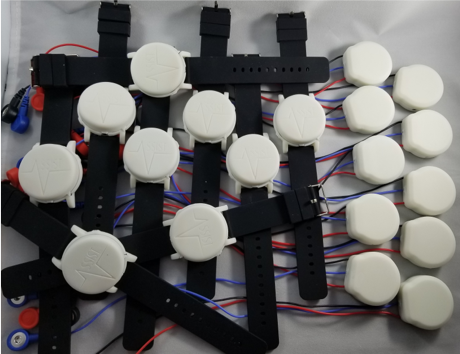Asthma

Asthma exacerbations are prevalent, result in extensive morbidity, and impose a significant economic burden on the healthcare system. At the same time, 91% of the world’s population lives in areas where air quality does not meet the World Health Organization guidelines. According to the Centers for Disease Control and Prevention, an estimated 9.1 million Americans had an asthma exacerbation in 2011, which drove more than 50% of asthma-related acute healthcare costs. Avoiding exacerbations is crucial for preventing progressive loss of lung function, which can lead to long-term morbidity and disability. Patients of all ages have great difficulty predicting asthma exacerbations.
Wearable devices are becoming more popular for healthcare management and are capable of providing dynamically-calculated up-to-the-minute measurements of a number of physiologic parameters, including heart rate, heart rate variability, respiratory rate, activity levels, and cough. Correlating this result with tracking of environmental exposure, such as exposed levels of ozone, volatile organic compounds and particulate matter concentration would give an unprecedented opportunity for an early warning system for asthma sufferers.
ASSIST’s engineered system and testbed on Health and Environmental Tracking provides a wearable device solution that can potentially identify specific patterns of change in physiologic parameters that predict an asthma exacerbation through:
- Long term monitoring of both health and exposure through low power environmental and physiological sensors.
- Mobile data analytics enabling correlation of information from multiple data sources.
- User-centered design towards long-term usability and wearability of devices.
- Collaboration with experts in asthma management and exercise physiology for clinical validation.
